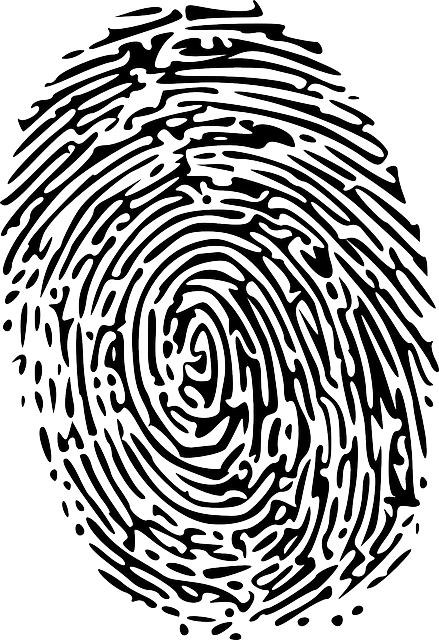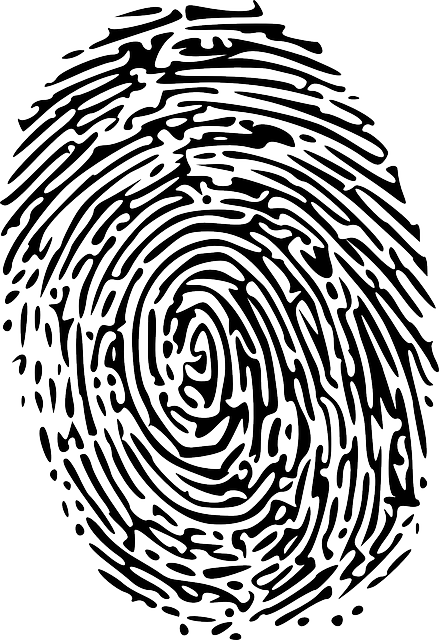Crafting compelling content for a criminal defense attorney’s website blog requires a deep understanding of the target audience—individuals facing criminal charges in Utah. By researching their needs and concerns, you can create informative posts that explain complex legal concepts in a clear and accessible manner. Showcase your expertise and experience through engaging case studies and real-life scenarios, instilling confidence and setting your firm apart. Address common legal concerns directly, providing reassurance and guidance. Incorporate personal stories to humanize your practice and create emotional connections. Optimize your content for search engines by conducting keyword research and incorporating keywords naturally. Every blog post should include a clear call-to-action, prompting potential clients to take the next step and seek assistance promptly.
Understanding Criminal Offenses
Being charged with a criminal offense can be a daunting and life-altering experience. Understanding the different types of criminal offenses, the elements required to prove guilt, and the potential consequences is crucial for both defendants and the general public. This article will provide a comprehensive overview of criminal offenses, their classification, legal defenses, criminal offense procedures, and their impact on individuals and society.
Different Types of Criminal Offenses
Criminal offenses can be broadly categorized into different types based on the nature of the crime committed. These offenses include but are not limited to:
-
Violent Crimes: This category includes offenses such as murder, assault, robbery, and sexual offenses that involve the use or threat of physical force.
-
Property Crimes: Property crimes involve offenses such as burglary, theft, arson, and vandalism, where the intent is to damage or unlawfully take another person’s property.
-
Drug Crimes: Drug-related offenses encompass the possession, distribution, or trafficking of illegal substances, including narcotics, marijuana, and controlled substances.
-
White-Collar Crimes: White-collar crimes involve non-violent offenses typically committed in commercial or professional settings. Examples include fraud, embezzlement, money laundering, and identity theft.
Elements of a Criminal Offense
To establish legal responsibility for a criminal offense, certain elements must be proven beyond a reasonable doubt. These elements typically include:
-
Actus Reus: The physical act or conduct that constitutes the offense. For example, the act of stealing or causing bodily harm.
-
Mens Rea: The mental state or intention behind the act. This includes intent, knowledge, recklessness, or negligence.
-
Causation: The required connection between the defendant’s conduct and the resulting harm or consequences.
-
Concurrence: The simultaneous presence of actus reus and mens rea, meaning that the intent to commit the offense was present at the time the act was committed.
Classification of Criminal Offenses
Criminal offenses can also be classified based on their severity or potential punishment. The three primary classifications are:
-
Felonies: Felonies are the most serious offenses and typically involve violence or significant harm. They are often punishable by imprisonment for more than one year, fines, or both.
-
Misdemeanors: Misdemeanors are less serious offenses that carry lesser penalties, usually including imprisonment for up to one year, fines, or a combination of both.
-
Infractions: Infractions are minor offenses that generally do not carry the possibility of imprisonment. They are typically punishable by fines or other non-custodial penalties.
Consequences of Criminal Offenses
Committing a criminal offense can lead to a range of consequences, which can vary depending on the type and severity of the offense, as well as the defendant’s criminal history. Some of the common consequences include:
Fines and Penalties
Criminal offenses often carry monetary fines as a form of punishment. The amount of the fine will depend on the severity of the offense. These fines can range from a few hundred dollars to thousands of dollars, and failure to pay them can result in further legal consequences.
Probation and Parole
In some cases, individuals convicted of a criminal offense may be sentenced to probation instead of or in addition to incarceration. Probation is a period of supervision during which the offender must comply with certain conditions, such as regular check-ins with a probation officer, attending counseling or rehabilitation programs, and avoiding further criminal activity. Parole, on the other hand, is the release of a prisoner before the completion of their sentence, subject to certain conditions.
Incarceration and Prison Sentences
For more serious offenses, incarceration in a correctional facility may be imposed as a punishment. The length of the prison sentence will depend on the severity of the offense, the criminal history of the offender, and other factors. Incarceration not only separates offenders from society but also serves as a deterrent for potential future criminal behavior.

This image is property of pixabay.com.
Legal Defenses for Criminal Offenses
Defendants facing criminal charges have the right to present legal defenses to challenge the prosecution’s case against them. These defenses aim to cast doubt on the elements required to prove guilt or provide justifications for the defendant’s actions. Some common legal defenses include:
Introduction to Legal Defenses
The legal system recognizes various defenses that can be asserted by defendants. These defenses seek to undermine the prosecution’s case and prove the defendant’s innocence or mitigate their liability. While the specific defenses available may differ depending on the jurisdiction and the offense, it is crucial to consult with an experienced criminal defense attorney to determine the best strategy in each case.
Alibi
An alibi defense involves presenting evidence that the defendant was not present at the scene of the crime when it occurred. This defense relies on establishing a solid timeline and providing credible witness testimony or other evidence to support the alibi.
Self-Defense
Self-defense is a defense that can be invoked when an individual uses force, including lethal force, to protect themselves from imminent harm or threat. The key element of self-defense is that the level of force used must be reasonable and proportionate to the perceived threat.
Insanity Defense
The insanity defense is based on the concept that a person who is mentally ill should not be held criminally responsible for their actions. To assert an insanity defense, the defendant must prove that they were legally insane at the time of the offense, meaning they were unable to understand the nature and consequences of their actions or distinguish right from wrong.
Necessity Defense
The necessity defense allows defendants to justify their actions if they can demonstrate that committing the offense was necessary to prevent a greater harm or danger. This defense is typically used in situations where a person’s actions were compelled by an immediate threat or emergency.
Criminal Offense Procedures
The criminal justice system follows specific procedures to ensure a fair and just resolution of criminal cases. These procedures involve multiple stages, each with its own purpose and requirements. Some of the key stages include:
Arrest and Booking
When a person is suspected of committing a crime, law enforcement officers have the authority to arrest and detain them. The arrest process involves taking the suspect into custody, informing them of their rights, and transporting them to a police station or other detention facility for booking. During booking, the suspect’s personal information is recorded, fingerprints and photographs are taken, and a bail determination may be made.
Prosecution and Evidence
After a suspect is arrested, the prosecution determines whether to file formal charges. This decision is typically based on the evidence gathered during the investigation, witness statements, and other relevant factors. The prosecution will present the evidence against the defendant to prove their guilt beyond a reasonable doubt.
Trial and Sentencing
If the defendant pleads not guilty or no agreement is reached during plea negotiations, a trial will be scheduled. The trial is an adversarial process where the prosecution presents evidence and arguments to establish the defendant’s guilt, while the defense challenges the prosecution’s case and presents evidence in support of the defendant’s innocence or mitigating circumstances. If found guilty, the court will impose a sentence that may include fines, probation, incarceration, or other penalties.

This image is property of pixabay.com.
Impact of Criminal Offenses
The consequences of criminal offenses extend beyond the legal realm and can have far-reaching impacts on individuals and society as a whole. Some of the significant impacts include:
Social Stigma and Reputation
Being charged with a criminal offense can result in social stigma and damage to an individual’s reputation. This stigma can lead to negative perceptions, barriers to employment, housing, and education opportunities, and strained personal relationships.
Employment and Education Opportunities
Individuals with criminal records may face challenges when seeking employment or pursuing further education. Many employers and educational institutions conduct background checks and may be hesitant to hire or admit individuals with a criminal history.
Family and Relationships
Criminal offenses can strain family relationships and have a profound impact on the familial dynamics. The emotional and financial burden of legal proceedings can cause stress and strain relationships, potentially leading to breakdowns in marriages, parent-child relationships, and extended family connections.
Preventing Criminal Offenses
Preventing criminal offenses requires a multifaceted approach that encompasses public awareness and education, effective law enforcement strategies, and community engagement and support. Some key preventive measures include:
Public Awareness and Education
Raising public awareness about the consequences of criminal behavior and promoting education on legal rights and responsibilities can help deter potential offenders. Educating individuals about the implications of criminal behavior can empower them to make informed choices and avoid engaging in unlawful activities.
Law Enforcement and Patrols
Effective law enforcement strategies, including proactive policing, community policing, and targeted patrols, can help deter criminal activity. By maintaining a visible presence and promptly responding to criminal incidents, law enforcement agencies can create a sense of security and discourage potential offenders.
Community Engagement and Support
Engaging communities in crime prevention efforts is essential for building trust, fostering cooperation, and addressing the underlying causes of criminal behavior. Programs that provide support, mentorship, and resources to individuals at risk of involvement in criminal activities can make a significant positive impact.

This image is property of pixabay.com.
Criminal Offenses and Human Rights
Criminal offenses intersect with fundamental human rights, and it is essential to ensure that individuals accused of a crime are afforded certain rights and protections. Some key human rights considerations in relation to criminal offenses include:
Right to a Fair Trial
The right to a fair trial is a fundamental human right enshrined in many international human rights instruments and legal systems. This right ensures that individuals accused of a crime have access to a fair and impartial judicial process, the right to legal representation, and the presumption of innocence until proven guilty.
Right to Legal Representation
Defendants in criminal cases have the right to legal representation to ensure a fair and balanced legal process. This representation helps protect the defendant’s rights, ensures the presentation of a robust defense, and promotes a more equitable and just resolution of the case.
Right to Rehabilitation
The right to rehabilitation recognizes that individuals who have committed criminal offenses have the right to access appropriate programs and services to aid in their reintegration into society. Rehabilitation programs can help address the underlying causes of criminal behavior and reduce the likelihood of reoffending.
Criminal Offenses and Technology
The rapid advancement of technology has brought about new challenges and opportunities in the field of criminal offenses. Some key areas where technology intersects with criminal offenses include:
Cyber Crimes
The emergence of the digital age has given rise to new types of criminal offenses known as cyber crimes. These offenses include hacking, identity theft, online fraud, and cyberbullying, among others. Law enforcement agencies and legal systems continually adapt to combat these evolving threats and protect individuals from digital harm.
Digital Forensics
Digital forensics is a branch of forensic science that involves the recovery and investigation of data from electronic devices. This field plays a crucial role in criminal investigations, helping law enforcement agencies uncover digital evidence and analyze it to establish guilt or innocence.
Surveillance and Privacy
Advancements in surveillance technology have raised concerns regarding the balance between public safety and an individual’s right to privacy. The use of surveillance cameras, facial recognition technology, and other surveillance measures can aid in crime prevention but also raise questions about the erosion of personal privacy rights.

This image is property of pixabay.com.
Juvenile Criminal Offenses
Juvenile criminal offenses are offenses committed by individuals who are under the age of 18 and are subject to a separate juvenile justice system. The goal of the juvenile justice system is to rehabilitate rather than punish juvenile offenders. Key considerations in juvenile criminal offenses include:
Juvenile Justice System
The juvenile justice system focuses on addressing the unique needs and circumstances of juvenile offenders. This system employs different procedures and legal standards to promote the rehabilitation and reintegration of young offenders into society.
Criminal Responsibility and Rehabilitation
Determining the criminal responsibility of juveniles requires a careful assessment of their age, mental capacity, and understanding of the consequences of their actions. Rehabilitation programs that address the underlying causes of juvenile delinquency play a vital role in preventing future criminal offenses and promoting positive behavioral changes.
International Perspectives on Criminal Offenses
Criminal laws and approaches to criminal offenses can vary significantly across different jurisdictions and legal systems. Understanding international perspectives on criminal offenses is essential for promoting cooperation, extraditing international fugitives, and fostering a harmonious global legal landscape. Some key considerations include:
Differences in Criminal Laws
Each country has its own set of criminal laws, definitions, and punishment for offenses. These differences can create challenges when dealing with cross-border crimes, extradition, and international cooperation in criminal matters.
Extradition and International Cooperation
Extradition is the process by which one country surrenders a suspected or convicted criminal to another country for trial or punishment. International cooperation in criminal matters, including extradition treaties and mutual legal assistance agreements, is crucial for combating transnational crime and ensuring justice across borders.

This image is property of pixabay.com.
Criminal Offenses and Constitutional Rights
Constitutional rights play a significant role in the protection of individuals accused of criminal offenses. Some key constitutional rights considerations in relation to criminal offenses include:
Fourth Amendment Rights
The Fourth Amendment protects individuals from unreasonable searches and seizures by law enforcement agencies. This right ensures that searches and seizures are conducted based on probable cause and with a valid search warrant, except in certain limited circumstances.
Fifth Amendment Rights
The Fifth Amendment protects individuals from self-incrimination and protects their right to due process. This includes the rights to remain silent, not to be compelled to be a witness against oneself, and the right to a fair trial.
Addressing Criminal Offenses in the Legal System
Addressing criminal offenses in the legal system requires ongoing reforms and policies to ensure fairness, equality, and the efficient administration of justice. Some key considerations for addressing criminal offenses in the legal system include:
Legal Reforms and Policies
Legal reforms and policy initiatives play a crucial role in improving the criminal justice system. These reforms may focus on improving access to legal representation, alternative sentencing options, addressing systemic inequalities, and promoting rehabilitation over punishment.
Court Backlogs and Delays
Court backlogs and delays can significantly impact the administration of justice, leading to prolonged periods of uncertainty for defendants, victims, and the public. Implementing measures to reduce court backlogs, such as increasing court resources, encouraging alternative dispute resolution methods, and streamlining case management processes, can help ensure timely and efficient resolution of criminal cases.
Fairness and Equality
Promoting fairness and equality in the criminal justice system is essential for upholding the principles of justice. This includes addressing racial and socio-economic disparities, ensuring equal access to legal representation, and promoting unbiased decision-making throughout the criminal justice process.
Public Perception of Criminal Offenses
The perception of criminal offenses in the public eye can have a significant impact on individuals and the justice system as a whole. Some key considerations for understanding the public perception of criminal offenses include:
Media Influence
Media coverage plays a crucial role in shaping the public’s perception of criminal offenses. The way crimes are reported, the portrayal of defendants, and the narrative surrounding criminal cases can influence public opinion and potentially impact the administration of justice.
Criminal Trials in the Public Eye
High-profile criminal trials that capture the public’s attention can have far-reaching effects on individuals involved in the case and the perception of the justice system. These trials often receive extensive media coverage and are closely followed by the public, which can impact public opinion and shape broader discussions on criminal justice issues.
Conclusion
Understanding criminal offenses is essential for both defendants and the general public. This comprehensive overview has touched upon the different types of criminal offenses, the elements required to prove guilt, the classification of offenses, legal defenses available to defendants, criminal offense procedures, the impact of criminal offenses on individuals and society, measures for preventing criminal offenses, the intersection of criminal offenses with human rights, technology, and constitutional rights, the global perspectives on criminal offenses, and various aspects of the legal system’s response to criminal offenses.
By building this knowledge base, individuals can be more informed about their rights and responsibilities when faced with criminal charges, and society can work towards a more equitable and just approach to addressing criminal offenses. The importance of addressing and preventing criminal offenses cannot be overstated, as these offenses have a significant impact on individuals, families, communities, and societies as a whole.



